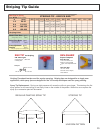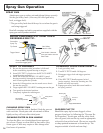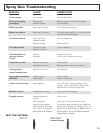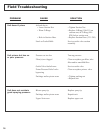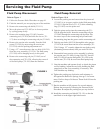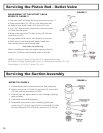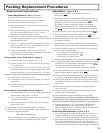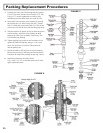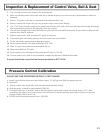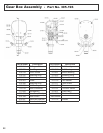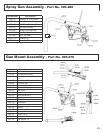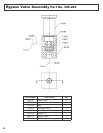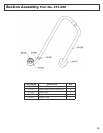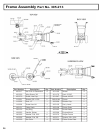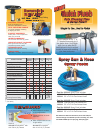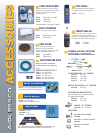
Inspection & Replacement of Control Valve, Ball & Seat
1. Use a wrench to unscrew the control valve with ring seal.
2. Make sure that the control valve knob turns freely and that its stem is not worn unevenly, mushroomed or otherwise
damaged.
3. Remove TC guide, verify that it is unbroken, clean and notch side is up.
4. Remove control ball. Inspect for any cuts, scratches, chips, rust or other damage.
5. Use a 7/16” allen wrench to unscrew the control seat from the valve body. Clean seat and inspect bevel edge for damage.
Also ensure that the gasket on the underside of the seat is intact.
6. If no obvious damage to the control ball and seat, place ball into seat and ll with water. If water leaks out between ball
and seat, they must be replaced.
7. Replace control valve, ball, seat and/or TC guide as necessary.
8. Clean and inspect valve body opening, where the control seat was installed.
9. Grease valve body opening with multipurpose grease.
10. Screw control seat into valve body and torque to 85 ft-lbs.
11. Place TC guide into control seat with notched side up.
12. Drop control ball into TC guide.
13. Screw control valve with ring seal into pump head. Torque to 15 ft-lbs.
14. If a new control valve, ball or seat is installed, complete the Pressure Calibration Procedure.
A repair kit with the control ball and seat is available as KIT-3-3100.
21
DO NOT USE THIS PROCEDURE WITHOUT A TEST GAUGE!
1. Install a gun, exible airless hose and Airlessco part # 111-045 glycerin lled test gauge onto unit.
2. Prime unit.
3. Turn the control valve knob fully clockwise (maximum pressure setting).
4. Read the gauge, it should be approximently 2500 PSI.
5. If maximum pressure is incorrect, remove the black plastic cap from the control valve knob. Insert a 3/16” allen
wrench into the control valve knob set screw, turn clockwise to increase pressure and counter-clockwise to decrease
pressure. Replace black plastic cap.
6. NEVER set the maximum pressure above 2500 PSI.
Pressure Control Calibration



